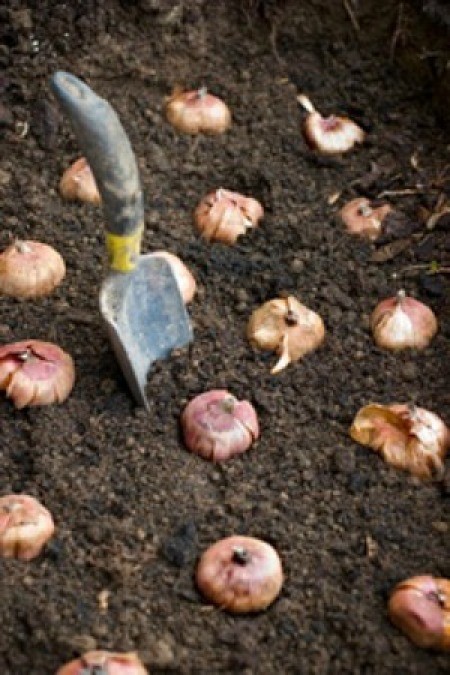
Planting bulbs is relatively straightforward. Dig a hole, drop in a bulb, and cover it with dirt. Well, at least it's almost that easy. To get them off to a good start, follow these bulb-planting tips:
The Trowel: Easily the most popular all around tool with gardeners, a trowel is also a great tool for planting bulbs, especially if you have several types of different bulbs that require different planting depths. Choose a trowel that has depth measurements marked down the length of the blade.
The Bulb Planter: This cylindrical hand-held tool is designed specifically for planting bulbs. Simply push it into the ground and pop out a soil core. Bulb planters come in handy if you're doing a large planting, but they are difficult to use in compacted soils. Most have depth measurements stamped on the side of the cylinder.
The Dibber (also called the dibble): The beauty of the dibber lies in its simplicity. Shaped like a carrot, it's only job is to poke holes in the dirt. A dibber is a great choice for planting small bulbs but can be difficult to use in compacted soils.
Ideally, bulbs should be planted as soon as possible after you purchase them, although some bulbs (tulips, crocus, and narcissus) can be stored in a cool, dry place for a time before planting. In general, planting times are based on bloom times. Spring-blooming bulbs require a period of cold dormancy to bloom and must be planted in the fall. Many summer and fall blooming bulbs can survive cold temperatures and need to be planted in the spring.
The depth of the hole will vary according to the type of bulb your are planting, so check with your vendor for exact instructions. Generally, larger bulbs (tulips, narcissus, and hyacinth) are planted to a depth of two or three times their height. In sandy soils, they can be planted slightly deeper than the recommended depth. In heavy soils, they can be planted slightly closer to the surface. Small bulbs are generally planted at a depth equal to their own height.
Cover the ground over your bulbs with chicken wire or hardware cloth after planting. (Use bricks to secure). Make sure to removed the wire after the ground is frozen, or in early spring when stems start to peek through the ground. Sprinkling coarse gravel or non-clumping kitty litter into the planting can also help deter rodents from digging. Avoid using straw to mulch around your bulbs. It's an attractive winter bedding that only encourages rodent activity near your bulbs.

About The Author: Ellen Brown is an environmental writer and photographer and the owner of Sustainable Media, an environmental media company that specializes in helping businesses and organizations promote eco-friendly products and services.
Add your voice! Click below to comment. ThriftyFun is powered by your wisdom!